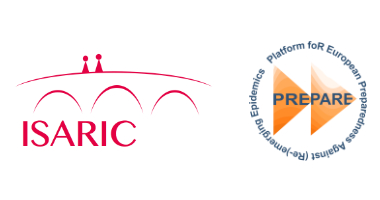| Resources |  (The CRFs and this page are currently being translated into Portuguese, Spanish and French) (The CRFs and this page are currently being translated into Portuguese, Spanish and French) Las siguientes herramientas de investigación se han desarrollado en un esfuerzo conjunto de colaboración internacional dirigido por ISARIC, un consorcio internacional que tiene como objetivo apoyar la investigación rápida durante nuevos y emergentes brotes de enfermedades. Los siguientes Formularios de Reporte de Caso (FRC) son herramientas de alta calidad que permitirán a los investigadores y clínicos que estudian la infección Zika capturar sistemáticamente en diferentes poblaciones un conjunto de datos básicos y estandarizados. Este conjunto de datos básicos refleja las prioridades de investigación y de mayor preocupación en lo que respecta a la infección por el virus de Zika, permitiendo que los datos provenientes de múltiples estudios puedan ser combinados. Los FRC han sido sometidos recientemente a un proceso de revisión por un panel de revisores expertos y con los términos de referencia. A continuación, se ponen a disposición de los colegas clínicos e investigadores las descargas en Word y PDF. Estos formularios se pueden adaptar a sus propios fines (por ejemplo, estudios de cohortes prospectivos y estudios de casos y controles) y requieren de la aprobación de la autoridad competente/comité de ética local. Los documentos básicos necesarios para un estudio de investigación clínica son un protocolo, el FRC para capturar los datos, y un formulario de consentimiento informado. Actualmente estamos trabajando para desarrollar y proporcionar un protocolo adaptado para la Caracterización Clínica de Zika (ZCC) y el formulario de consentimiento informado para completar este conjunto de herramientas de investigación.
Downloads [Last update: 24 March 2016]
Change log and updates 28 January 2016 | Version 1.0
27 February 2016 | Version 5.0 Updates:
Under Development:
29 February 2016 | Version 5.1 (zip) Updates:
Under Development:
24 March 2016 | Version 5.2 Updates:
Under Development:
These CRFs will be kept under regular review, and may be modified and updated by ISARIC collaborators as further clinical evidence emerges. They will be submitted to the WHO Ethical Review Board for consideration as a WHO research tool. Disclaimer: These CRFs are intended for use as a standardised document for the collection of clinical data in studies investigating the Zika virus. Responsibility for use of these CRFs rests with the study investigators. ISARIC and the authors of the CRF accept no responsibility for the use of the CRF in an amended format nor for the use of the standardised CRF outside its intended purpose. Formatting issues are in the process of being resolved. Word documents are available in order to adapt and translate the CRFs, however, there may be issues between macs and PCs. The PDF format is also available, which should be well formatted on both types of machines. How to use These CRFs are to be used at admission and at discharge/going home. For any patients with acute symptoms and admitted to hospital for more than 24 hours, the Baseline and Outcome CRF and the Laboratory Results CRF can be copied and used for daily data recording. Each investigator and site may choose the amount of data to collect based on available resources and the number of patients enrolled to date. Ideally, researchers should collect data from eligible patients (neonate and mothers) using all of the above CRF modules as appropriate. For studies only collecting data post-delivery, we recommend collecting a minimum data set using the following CRFs:
Sites with very low resources or very high patient numbers may choose to collect data using the following CRFs only:
These CRFs can be used and modified as appropriate and needed, depending on the type of study and resources available. Please note that a central, electronic database is currently being developed by MedSciNet under the Zika Alliance Consortium.xt For more information regarding any of the research tools posted on this page, please contact ISARIC's Clinical Coordinator Dr Gail Carson by email. |
||||||||||||
|
Data Collection Tools |
|||||||||||||